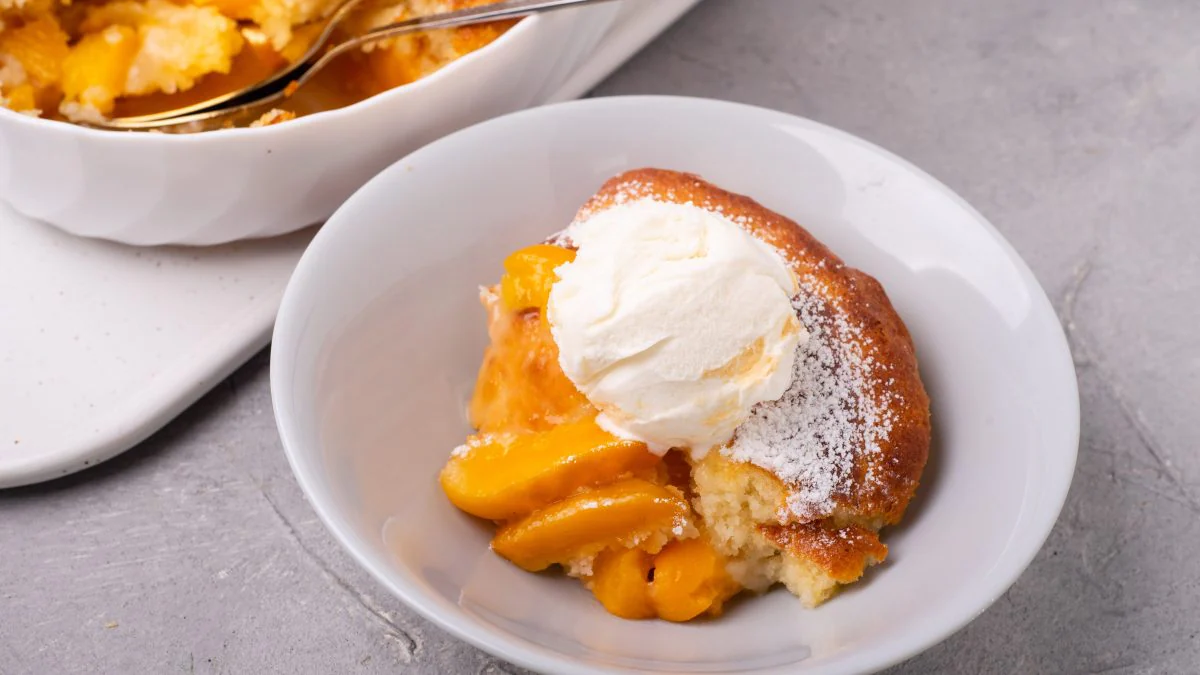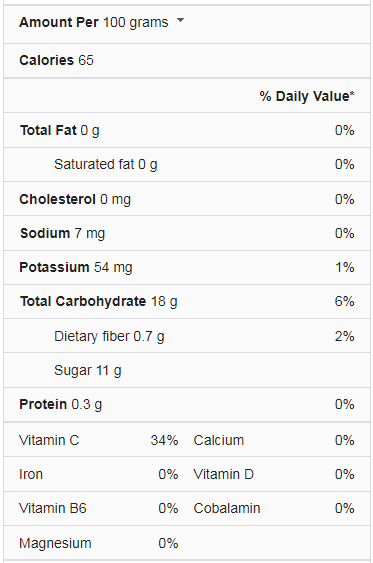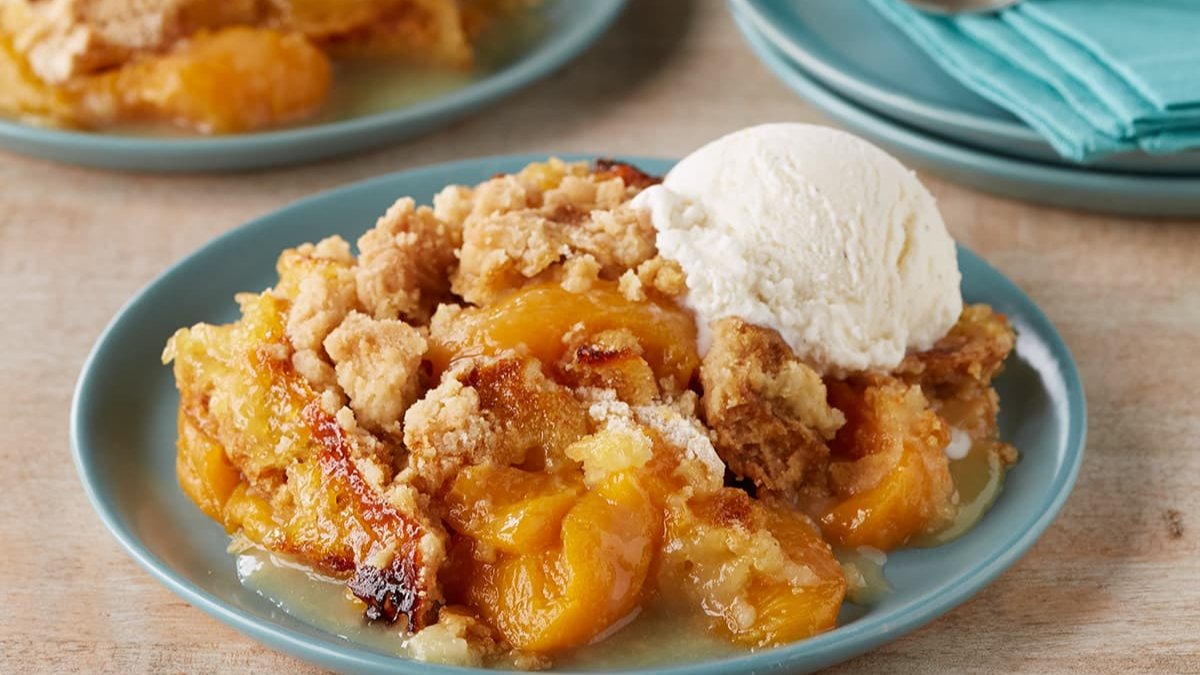Easy peach cobbler is the ideal way to round off a meal in the summer. Sliced fresh peaches simmering in butter and spices will bring you the tastes of summer. Depending on the time of year, you can easily substitute any fruit for the peaches in the topping by using components from your pantry. The perfect peaches for peach cobbler are ripe, tender ones. Make your cobbler a day or two later if your peaches aren’t quite ripe.
Cobblers can therefore be either sweet or savory. Cobbler recipes are well-liked in the United States and the United Kingdom. There are numerous cobbler recipes and methods to choose from. Contrary to the delicious variations produced with vegetables, fruit cobblers are more widely consumed.
Cobbler Nutrition Facts
What is Exactly Cobbler?
A big baking dish is filled with fruit (or, less frequently, savory) filling called peach cobbler, which is then coated with batter, biscuits, or dumplings and baked. Particularly in the American South, some cobbler recipes resemble a deep-dish pie with a thick crust and a top and bottom crust. Contrary to popular belief, a crumble is not the same as a cobbler in American and British cuisine. The British American colonies are where Cobblers first appeared.
Due to a lack of appropriate supplies and cooking tools, English settlers could not manufacture traditional suet puddings; instead, they covered stewed contents with a layer of uncooked plain biscuits, scone batter, or dumplings fitted together. Uncertain history surrounds the name cobbler, which dates back to 1859.
Types of Cobblers
Here are three types of cobblers:
- Cobbler – An American deep-dish fruit pie with a thick crust (usually a biscuit crust) and a fruit filling. Some forms of Cobblers are wrapped in the crust, while others have a crumb topping.
- Crumbles are more primitive, baked with the fruit mixture on the bottom with a crumb topping. The crumb topping can be made with flour, nuts, bread crumbs, cookie or graham cracker crumbs, or even breakfast cereal. A Crumble is the British version of the American Crisp.
- Brown Betty – A Brown Betty consists of a fruit filling baked between layers of buttered crumbs. Betty was a famous baked pudding made during colonial times in America.
What is the Difference Between a Cobbler & a Crumble?
Even though the terms “cobbler” and “crumble” are interchangeable for the same meal, a crumble is a different dish. In a crumble recipe, a streusel layer is added to the fruits; this is where the difference is. Alternatively, to using flour, oats and flour can be used to make the streusel topping. Rolling the oats adds a crisp and crunchy coating to a crumble. But flour alone may also achieve a crispy texture without the oats’ crunchiness.
How to Make Peach Cobbler?
We stack the fruit on top of the batter and bake our traditional southern peach cobbler. The sweet batter rises above the peaches as it bakes, forming a fluffy cake-like topping. The dish is made even simpler because we didn’t peel the peaches, which provides a beautiful color. It is the ideal treat for summer when served with vanilla ice cream.
Ingredients
Filling
- 5 Small peaches, cut into 1/4-inch-thick slices (about 5 cups).
- 3/4 cup sugar
- 1/2 teaspoon ground cinnamon
- 1/4 teaspoon kosher salt
- Two teaspoons of fresh lemon juice
Batter
- 1/2 stick (4 tablespoons) unsalted butter
- 3/4 cup all-purpose flour
- 3/4 cup sugar
- 1 1/2 teaspoons baking powder
- 1/4 teaspoon kosher salt
- 1/2 teaspoon pure vanilla extract
- 3/4 cup milk, at room temperature
Steps to Follow
- In a medium saucepan, combine the peaches, sugar, cinnamon, salt, and lemon juice to make the filling. Cook occasionally until the sugar is dissolved and the peach juices boil in the container over medium heat. Cook for five more minutes with the heat reduced to a simmer. Get rid of the heat.
- To prepare the batter, add the butter to a 2-quart baking dish and preheat the oven. Set the range to 350 degrees Fahrenheit.
- Mix flour, sugar, baking soda, and salt in a giant bowl. In a cup of liquid, combine the milk and vanilla. Whisking continuously, slowly add the wet ingredients to the dry ingredients until thoroughly incorporated.
- After taking the baking dish out of the oven, evenly distribute the batter over the melted butter. Distribute the peaches and their juices on top of the batter in a uniform layer. Bake for 35 to 45 minutes until the top of the cobbler is golden brown and the peach juices are bubbling.
- Let cool to room temperature before serving.
What are the Health Benefits of Peach?
Here are the health benefits of peach:
Improve Heart Health
Peaches are abundant in flavonoids, antioxidants that may support a healthy heart, and other fruits like apples, pears, and plums. According to a 2017 study, men and women who consume a lot of flavonoids had a lower risk of dying from cardiovascular illnesses and other related reasons. Additionally, studies show that increasing your intake of fruits like peaches, which are high in flavonoid antioxidants, may lower your chance of having high blood pressure (a risk factor for heart disease).
May Support your Immune System
Peaches contain vitamins C and other minerals that help the immune system. One giant peach has roughly 10% of the vitamin C your body needs daily to support healthy immune systems and defend you from infection. Your immune system will be protected and strengthened to combat illnesses or disorders.
Help Maintain a Healthy Weight
Fruits and vegetables, like peaches, are nutrient-rich and low in calories, which can maintain a healthy weight.
They may also make you feel fuller for extended periods due to their high water and fiber contents.
Protect and Improve Skin
Peaches’ anti-inflammatory qualities may aid in protecting and enhancing your skin. Vitamin C is included in beauty and helps to preserve general skin health. Additionally, they contain provitamin A, which can shield your skin from damaging UV rays and other elements to keep it looking young. Provitamin A carotenoids, which the body may transform into the active form of vitamin A, are another excellent source of nutrition in peaches. Carotenoids build up in the skin and might help shield it from damaging UV rays.
May Help Reduce Cancer Risk
Sincerely, no meal can completely ward against cancer. However, consuming more fruits and vegetables is associated with lower cancer risk. According to research, carotenoids and caffeic acid, two additional antioxidants in peaches, may also help prevent various malignancies.
One 2014 test-tube study even discovered polyphenols, antioxidants derived from peaches and plums, may help stop the growth and spread of breast cancer cells without hurting healthy cells. Even though these results are intriguing, further research on humans is still required in this field. Additionally, eating a peach every day won’t help treat cancer.
May Help Support Blood Sugar Regulation
Consuming fruit is associated with reduced blood sugar levels, a decreased risk of type 2 diabetes, and lower blood sugar levels. Despite not being a human study, one in 2015 on rodents discovered that drinking peach and plum juice reduced the risk of cardiovascular disease, insulin resistance, and high blood sugar.
Improve Eyesight
Because of an antioxidant called beta-carotene that is included in peaches, they may help keep your eyes healthy. The attractive orange hue of peaches is due to this antioxidant. Beyond appearance, your body may turn beta-carotene into vitamin A, which is necessary for your vision.
How to Store Peach Cobbler?
The peach cobbler should be cooled before being divided into smaller parts for convenient storage. Covering the pan with foil or plastic wrap will easily package a peach cobbler for the fridge by keeping extra air and moisture out. Freezer-safe containers are simple to seal and stack in a small space for freezing the dessert. If you’re wrapping it, cover the peach cobbler in freezer-safe plastic wrap first, then add a layer of foil to keep moisture out as much as possible.
Put the covered peach cobbler in the refrigerator for short-term storage. Desserts made with cooked fruit should be consumed within two to three days to be safe. You may prepare peaches in season and continue to savor their flavor for months by freezing cobblers, which last for six to eight months. For convenience and fewer extra dishes, use the oven- and freezer-safe containers if available.
How to Tell if Peach Cobbler has Gone Bad?
Unfortunately, peach cobbler does not last forever; if left for too long, it will go wrong.
There are a few ways to tell if your peach cobbler has gone wrong:
- Mold Present- Obviously, your peach cobbler is no longer safe to eat and should be thrown away if there is visible mold.
- Texture- Before the mold appears, the peach cobbler will start to get mushy and soggy as it begins to go off.
- Smell- Our noses are pretty good at detecting when something has gone wrong, so it is always a good idea to do a smell test before you eat any peach cobbler that has been stored for a while, even when it looks fine.
Conclusion
A delightful and adaptable treat that comes together quickly is a peach cobbler. Early American settlers created the cobbler after realizing they lacked the ingredients to manufacture suet puddings. The cobbler is a dessert made with dried fruit and biscuit dough. You have a lot of alternatives for keeping any leftover cobbler, or you can even prepare more to use later.
If you plan to consume peach cobbler within two days, there is no need to refrigerate it. It can be kept for up to 4 days in the refrigerator and up to 4 months in the freezer. You can freeze the unbaked peach cobbler or even the filling for later use.



